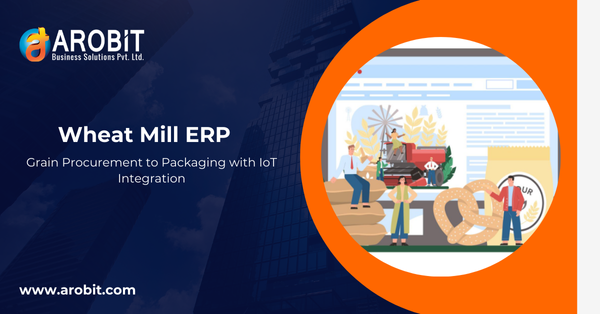Quality is a must in the rapidly changing world of software development. As per a recent survey conducted in 2025, 75% of software projects do not meet their quality expectations at the initial stages and cause an increase in cost by delaying the projects. This statistic underscores the critical need for understanding and implementing software quality attributes effectively.
Software Quality Attributes
Software quality attributes, otherwise referred to as non-functional requirements, are desirable attributes that define how well a software application works over time under different conditions. They include a range of characteristics that affect the user experience, system performance, and overall reliability of software products.
Definition of Software Quality
Software quality refers to how well a software product meets its requirements with the needs and expectations of users; it consists of two elements: functional aspects (what the software does) and nonfunctional aspects (how well it performs).
The key dimensions of software quality are as follows:
- Functionality: The features and capabilities of the software.
- Performance: How efficiently the software operates under various conditions.
- Usability: The simplicity and intuitiveness of the software for users.
Importance of Software Quality Attributes
Understanding software quality attributes is crucial for several reasons:
- User Satisfaction: High-quality attributes lead to better user experiences, increasing customer satisfaction and retention.
- Cost Efficiency: Investing in quality attributes early in the development process can reduce long-term maintenance costs.
- Competitive Advantage: Software with superior quality attributes can outperform competitors in the market.
Common Misconceptions About Software Quality
Despite their importance, several misconceptions persist regarding software quality:
- Quality is Just about Functionality: Many think that if the software works as expected, then quality is guaranteed. But nonfunctional attributes also play a role.
- Testing is Enough for Quality: Testing is very important, but it cannot be used to cover all of the quality.
Software Quality Attributes Classification
Software quality attributes can be grouped into many categories based on the nature of the attributes:
- General Categories
- Design Qualities
- Runtime Qualities
- System Qualities
- User Qualities
- Non-runtime Qualities
Detailed Discussion of Each Software Quality Attribute
Reliability
Definition: Software reliability is the capability of the software application to repeatedly deliver its intended function free of errors and failures in actual use.
Components:
- Availability: The proportion of time a system remains operational and accessible to its users.
- Recoverability: The ability to bring a system back to full functionality after a failure.
- Fault Tolerance: The ability to continue operating despite the presence of faults.
Importance: Reliable software minimizes downtime and enhances user trust, particularly in critical applications like healthcare or finance.
Maintainability
Definition: Maintainability refers to how easily a software application can be modified to correct bugs, improve performance, or change in response to changing requirements.
Key Factors:
- Code Clarity: Well-organized and documented code simplifies updates.
- Modularity: Isolating components allows for easier changes without affecting the entire system.
Importance: High maintainability reduces long-term costs and time spent on updates, ensuring the software remains relevant as requirements evolve.
Usability
Definition: Usability measures how intuitive and user-friendly an application is for its users.
Key Aspects:
- Learnability: The speed and ease with which new users can understand and become proficient with a system or skill.
- Efficiency: The speed at which users can complete tasks after learning the system.
- Satisfaction: The general user experience and enjoyment of using the software.
Importance: A user-friendly interface leads to higher user satisfaction and lower training costs, driving adoption and usage.
Portability
Definition: Portability refers to the capability of software to operate seamlessly across various platforms with little to no modification.
Challenges:
- Platform Dependencies: Software may be tied to specific operating systems or hardware.
- Data Format Compatibility: The complexity of ensuring that data can be used across different systems.
Importance: High portability enables the deployment of applications across various environments, thereby increasing flexibility and reach.
Correctness
Definition: Correctness refers to how well a software application meets its specifications and performs its intended functions.
Importance: High correctness is very important, especially in safety-critical systems where errors can have devastating consequences, such as in aerospace or medical applications.
Efficiency
Definition: Efficiency refers to how effectively a software application uses resources in executing its tasks.
Key Metrics:
- Response Time: The rate at which the system answers user input.
- Throughput: Work done per unit time, for instance, the number of transactions handled per second.
Importance: Effective applications decrease operational expenditure and user dissatisfaction through reduced waits and utilization of resources.
Security
Definition: Security determines the effectiveness of protecting a software application against unauthorized access and breaches.
Key Components:
- Authentication: User ID verification.
- Authorization: Determining user permissions within the system.
- Data Encryption: Protecting sensitive information from unauthorized access.
Importance: Strong security practices are essential for protecting user data and maintaining trust, especially in industries like finance and healthcare.
Testability
Definition: Testability is the degree to which software can be evaluated for defects and verified against its requirements efficiently.
Factors Influencing Testability:
- Modularity: Clear interfaces between components facilitate testing.
- Documentation: Well-defined requirements help testers understand expected behaviour.
Importance: High testability enables efficient defect detection early in the development process, ensuring higher quality at release.
Flexibility
Definition: Flexibility refers to the ease with which a software application can adapt to changing requirements or environments without involving much rework.
Importance: Flexible systems can easily accommodate new features or changes in technology, reducing future development costs and time.
Scalability
Definition: Scalability refers to a software application's ability to handle increased loads without performance degradation as demand grows.
Types:
- Vertical Scalability (Scaling Up): Adding resources (CPU, RAM) to existing machines.
- Horizontal Scalability (Scaling Out): Adding more machines or instances to manage load.
Importance: Scalable applications ensure continued performance as user demand increases, essential for businesses expecting growth.
Compatibility
Definition: Compatibility refers to the compatibility of a software application with other systems or applications within its environment.
Importance: Ensuring compatibility allows for seamless integration with existing tools, enhancing productivity and user experience across platforms.
Supportability
Definition: Supportability is the ease with which issues may be solved by support teams or end users when they occur within the software application.
Importance: Higher supportability reduces downtime during incidents with rapid diagnosis and resolution of problems through crystal-clear documentation and intuitive interfaces for support staff.
Reusability
Definition: Reusability is how easily the components of a software application can be reused in other applications or projects without modification.
Importance: High reusability promotes efficiency because it allows developers to leverage existing codebases, thus significantly reducing development time and costs.
Interoperability
Definition: Interoperability refers to the ability of different systems or applications within an environment (or across environments) to communicate effectively with one another while exchanging data seamlessly through established protocols/interfaces.
Importance & Challenges:
Ensuring interoperability allows organizations using diverse technologies/products from various vendors greater flexibility when integrating solutions; however, achieving this often requires adherence to strict standards/protocols, which may not always align perfectly between different vendors' offerings, leading to potential compatibility issues down the road if not managed properly upfront during the design phase itself!
Importance of Software Quality Attributes
The role of software quality attributes goes beyond mere functionality, as they play a significant role in the overall usefulness and success of a software system:
- Role in Software System Usefulness: High-quality attributes improve functionality, thus ensuring users can get the maximum value out of the software.
- Prevention of Reputation Damage: Poorly designed systems lead to failures that damage an organization's reputation; the investment in quality reduces this risk.
- Integration into SDLC: Quality attributes are embedded into each stage of SDLC. This ensures all the elements are covered, and standards are maintained.
- Continual Adaptation and Management Enforce: Regular reviews will ensure that quality standards are not compromised because of changes in technology.
How Test Automation Can Help Enhance Quality Attributes of Software
Test automation is instrumental in improving the quality attributes of software since it makes the process easier and result-oriented.
- Overview of the Role of Automation Tools: Automation tools enable effective testing processes by allowing teams to focus on important areas and decrease manual effort.
Specific Examples of Tools
- JMeter: It is a performance testing tool that guarantees scalability under load conditions.
- Testsigma: This is a flexible tool for correctness, compatibility, and usability testing using codeless automation.
Advantages of Testsigma
- Codeless automation allows easy creation of tests by non-technical users.
- Massive device/browser support allows testing coverage of all devices/browsers.
FAQs
Q1. Why are quality attributes important?
A1. Quality attributes ensure that software is developed to meet user expectations, it is reliable in operation across different conditions, and it is maintainable over time.
Q2. What are system attributes?
A2. System attributes describe the qualities that define how well a system performs its functions in meeting user needs.
Q3. What are the most important software quality attributes for ERP companies in India?
A3. ERP companies in India focus on reliability, usability, security, and maintainability to deliver high performance and user satisfaction.
Q4. What software quality attributes do CRM companies in India focus on?
A4. CRM companies in India focus on usability, efficiency, security, and flexibility to deliver reliable customer relationship management solutions.
Q5. What are the most important software quality attributes for offshore IT outsourcing partners?
A5. The companies will primarily consider reliability, security, maintainability, and flexibility while taking an offshore IT outsourcing partner to help them achieve a project successfully and delight the clients.
Conclusion
In short, the quality attributes of software are highly important to be understood and implemented to gain the best possible results in the execution of a software development project. Not only does it satisfy the user's end, but it also saves business sustainability in terms of less maintenance cost and more efficiency in overall business performance. The more advanced technology is, the more its maintenance of these qualities would be necessary to succeed in such a competitive business environment.








